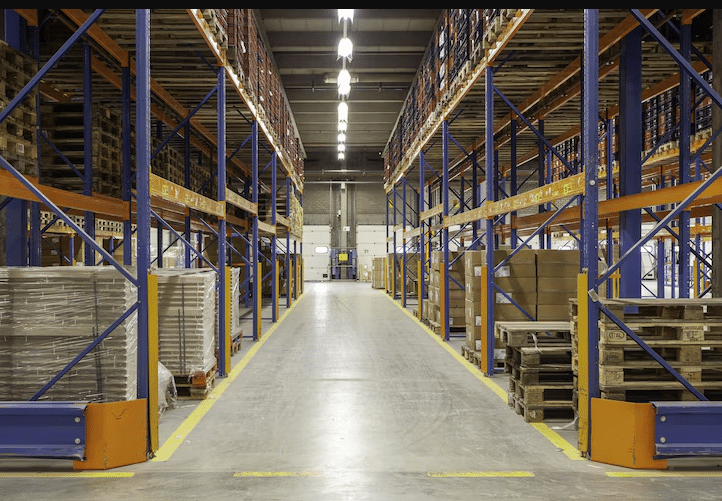How to Upgrade Your Warehouse with High-Class Equipment for Maximum Efficiency

A warehouse is the backbone of any supply chain. Without efficient operations, delays, errors, and increased costs can pile up. Upgrading your warehouse with high-class equipment isn’t just about modernization—it’s about staying competitive. Businesses that invest in top-tier warehouse technology improve productivity, reduce labor costs, and enhance workplace safety.
If your warehouse relies on outdated systems, now is the time to make changes. From automation to better storage solutions, the right upgrades can streamline operations and create a more efficient workflow. Let’s explore the key equipment that can transform your warehouse into a high-performing facility.
Essential High-Class Equipment for a Modern Warehouse
The right equipment can make all the difference in warehouse efficiency. Here are some of the top high-class solutions worth considering:
1. Automated Storage & Retrieval Systems (AS/RS)
AS/RS technology allows for the automatic storage and retrieval of goods. These systems reduce the need for manual labor, minimize picking errors, and optimize warehouse space. Whether it’s robotic shuttles or vertical lift modules, AS/RS helps speed up inventory movement while improving accuracy.
2. Conveyor Belt Systems
Moving inventory manually is slow and prone to inefficiencies. Conveyor systems help transport goods quickly and with minimal effort. Modern conveyor belts integrate with sorting and packaging systems, ensuring a seamless transition between warehouse zones.
3. Robotic Picking & Sorting Systems
Robotic automation is becoming an industry standard. Robots equipped with AI and machine learning capabilities can pick, pack, and sort products faster than humans, reducing human error and increasing fulfillment speeds. If you’re looking to scale operations, robotic systems are a must-have.
4. Electric Forklifts & Pallet Jacks
Traditional forklifts rely on fuel, increasing operational costs and emissions. Electric forklifts are more energy-efficient, cost-effective, and require less maintenance. Similarly, electric pallet jacks improve mobility, making it easier to transport heavy loads across a warehouse with minimal physical strain.
5. Smart Warehouse Management Systems (WMS)
A robust WMS integrates all warehouse activities, from inventory tracking to order processing. With real-time analytics, managers gain better visibility over stock levels, identify inefficiencies, and optimize workflows. Investing in a cloud-based WMS ensures flexibility and scalability for future growth.
Storage Solutions for Space Optimization
A cluttered warehouse slows down operations. Optimizing storage is crucial for improving efficiency and safety.
- High-Density Shelving and Racking Systems: Maximize vertical space to store more goods while maintaining easy access.
- Vertical Storage Systems: These automated storage units retrieve items at the push of a button, reducing retrieval time and freeing up floor space.
- Automated Guided Vehicles (AGVs): AGVs transport goods between storage and packing areas, reducing manual handling and improving efficiency.
- Low-profile hoppers: Low-profile hoppers are perfect for handling bulk materials while keeping warehouse floors organized and minimizing product loss.
By implementing these storage solutions, you can create a more organized warehouse while maximizing available space.
Safety & Compliance Upgrades
Investing in warehouse safety is just as important as upgrading equipment. Advanced safety solutions protect workers while ensuring compliance with industry regulations. For industry standards on warehouse safety and compliance, visit the Occupational Safety and Health Administration (OSHA) warehouse safety guide.
- Smart Safety Barriers and Motion Sensors: Prevent collisions by detecting movement and alerting workers of potential hazards.
- Advanced Climate Control Systems: Ideal for warehouses storing temperature-sensitive goods such as pharmaceuticals or perishables.
- Fire Suppression Systems: Automated fire detection and suppression technologies reduce risks and prevent costly damages.
By prioritizing safety, you reduce workplace accidents, minimize liability, and create a more secure work environment.
Cost vs. ROI: Is Upgrading Worth It?
Warehouse upgrades come with an upfront investment, but the long-term benefits outweigh the costs.
To determine the return on investment (ROI), consider:
- Labor Cost Savings: Automation reduces the need for excessive manual labor, lowering payroll expenses.
- Faster Order Fulfillment: Improved efficiency leads to quicker deliveries, enhancing customer satisfaction.
- Reduced Errors: High-tech solutions minimize picking and inventory mistakes, reducing waste and losses.
While the initial cost may seem high, the increased productivity and long-term savings justify the investment.
Step-by-Step Guide to Upgrading Your Warehouse
Making strategic upgrades requires careful planning. Follow these steps for a seamless transition:
1. Assess Your Current Warehouse Setup
Identify inefficiencies and bottlenecks. What areas cause delays? Where are the most frequent errors occurring? A warehouse audit will highlight critical areas for improvement.
2. Set a Budget and Prioritize Key Upgrades
Not all upgrades need to happen at once. Determine which investments provide the highest ROI and focus on those first.
3. Partner with Reliable Suppliers
High-class equipment requires quality manufacturers. Research suppliers that offer durable, scalable, and reliable solutions.
4. Train Employees for Seamless Integration
New technology is only effective if employees know how to use it. Provide proper training to ensure smooth adoption and maximum efficiency.
Conclusion: The Future of High-Tech Warehousing
The warehouse industry is evolving rapidly. Automation, AI-driven solutions, and intelligent storage systems are no longer optional—they’re necessary for staying competitive. By upgrading your warehouse with high-class equipment, you enhance productivity, reduce costs, and future-proof your operations.
Start with small changes, measure performance, and scale your upgrades over time. The right investment today will lead to a more efficient and profitable warehouse in the years to come.

Creative Ways to Utilize Business Signage Beyond Branding

How to Identify the Best Watch Brands for Investment

Why Your Company Should Join Hands With Ruby Digital?

Pre-Requisites Before Applying for an Instant Personal Loan

Embrace the Magic of Turkey: An Unforgettable Visit

Transform Your Backyard into a Magical Retreat: Creative Ideas for an Enchanting Outdoor Space

How to Upgrade Your Warehouse with High-Class Equipment for Maximum Efficiency

How to Elevate Your Commercial Space: Design, Lighting, and Aesthetic Upgrades








